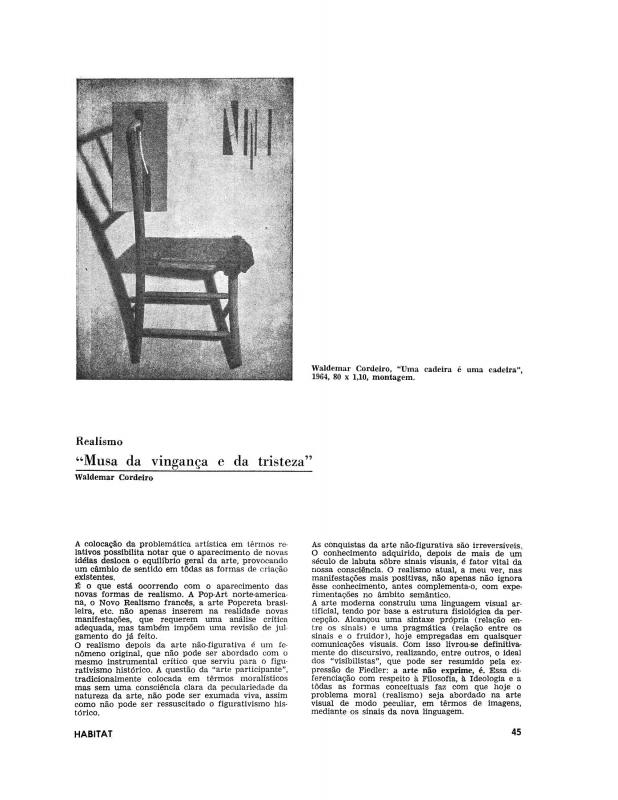The Italian-Brazilian artist Waldemar Cordeiro (1925–73), who was born in Rome and settled in Brazil when he was twenty years old, was a pioneer of Brazilian concrete art. He was an incisive art critic and one of the major local promoters of abstract art as far back as the late 1940s. Written shortly after his arrival in the country and published in Revista de Novíssimos no. 2, São Paulo, January-February 1949—see document 6 on CD-ROM WC—, this essay sheds light on his early ideas concerning the definition of “concrete,” which led to violent disagreements among artists and critics on the subject of figuration and abstract art. As a result of his column in Folha da Manhã and the articles he published in trade magazines (such as HABITAT), in which he championed these movements, he eventually became the spokesman for concrete art in São Paulo.
“Concrete” art (understood by São Paulo artists as being governed by geometric-mathematical principles) and its subsequent opposite number, the “neo-concrete” art produced by artists in Rio de Janeiro (which favored a more sensory form of abstract geometry), were both radically opposed to any type of figurative or nationalist art of the kind that had flourished in previous decades. Cordeiro approached the question from a (pictorial) reality consisting of lines and colors that were impervious to any sort of illustration, which was an ideal position from which to work with the visual values of contemporary life.
Two of Cordeiro’s articles provide complementary reading on the subject discussed in this essay: “Novas tendências e nova figuração” [doc. no. 1110840] claims that Nova Figuração was a response to the conflict between abstract and figurative art; and “Realismo: ‘musa da vingança e da tristeza’” [doc. no. 1110839], where he states his conviction that the advances made by non-figurative art are irreversible, and that the new trends (nts) cannot be confused with figurative art.


